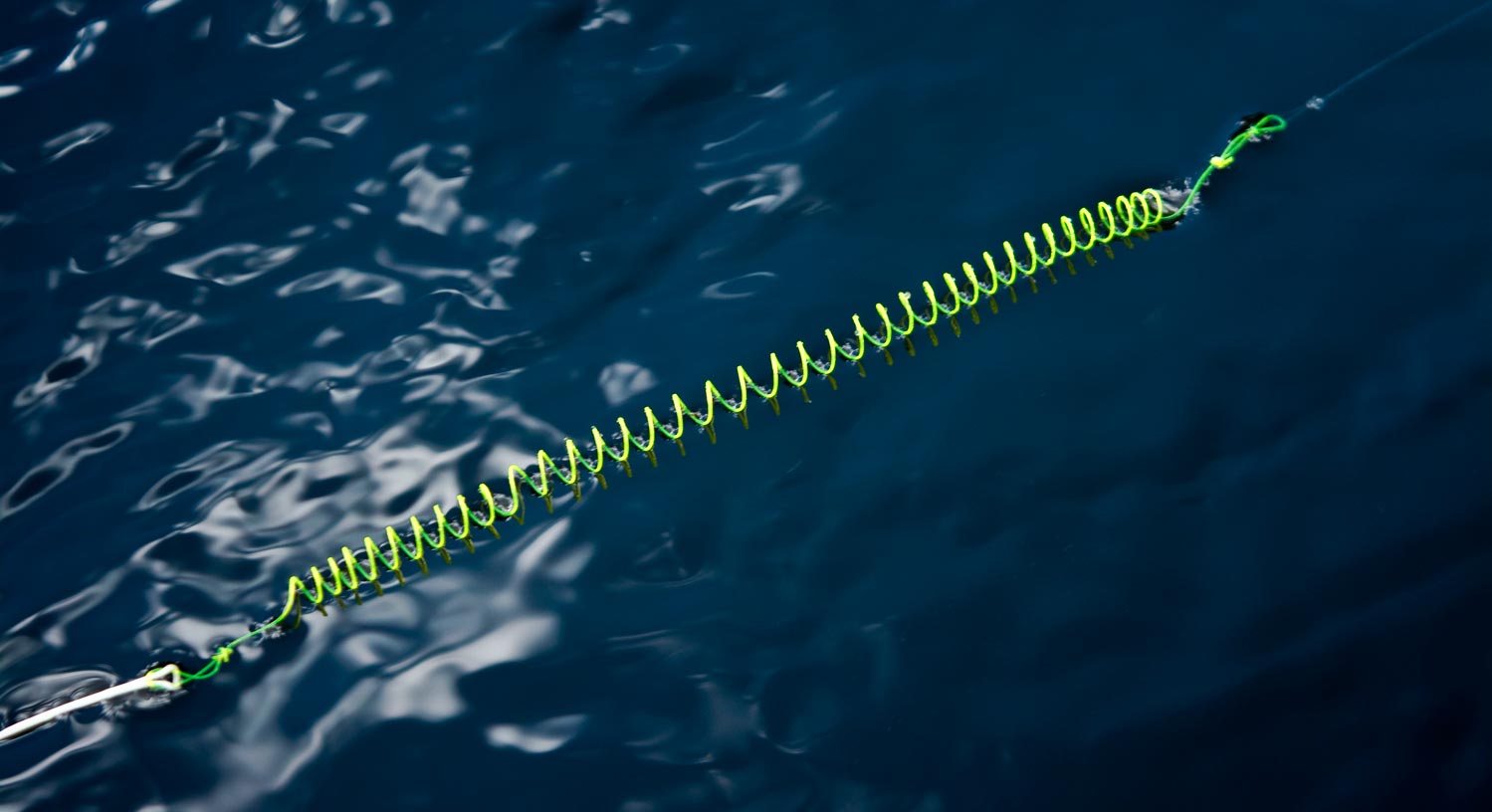By Johnny Spillane
As we get into winter and fish are becoming more selective and eating smaller bugs, fishing can become more challenging. Using a French Slinky indicator or Slinky indicator can be a great way to hook a few more fish when they are being ultra selective or ultra spooky.
I like to use it when fish are in shallow water or they are suspended close to the surface in deep water but not feeding on the surface. Typically, I like to use some sort of dry dropper rig in this situation, but if the fish are being picky and ignoring the flies, it might be because of the larger dry fly used to support the nymphs. They have been seeing that stuff all summer.
Removing it can be a big help, but then you’re stuck with the problem of detecting the strike. A slinky indicator is perfect for that situation. It’s easy for fishermen to see, detects even the subtlest strikes and is very difficult for the fish to see. There is no splash when it hits the water so you can get it in fairly close to fish without spooking them and if you grease it with mucilin it actually floats really well and will support a moderately sized dropper. There are countless other ways to use this rig but this is where I have found it to be the most effective for me.
Making the Slinky Indicator
In order to build the indicator, you’ll need a few things. An empty Bic pen case or something similar, duct tape, 15lb high visibility monofilament and some boiling water.
Cut a two foot section of the mono and tape one end to the pen case leaving a 6- to 8-inch tag and then tightly wrap the mono around the pen 8-15 times depending on how long you want your slinky indicator to be. Tape the other end of the mono to the pen. Make sure you use more than one wrap of duct tape because when it goes into the water it can come unwrapped.
Next place the pen into the boiling water and leave it there for about 5 minutes. After five minutes, throw the pen in the freezer and let it sit for at least a few hours. When it is done, leave the mono on the pen and only remove it when you are ready to use it. I like to tie perfection loops on both tag ends so that it’s easier to remove and reuse.
Give it a try; I think you’ll be pleased with the results!
Tight lines,
Johnny Spillane
Gink & Gasoline www.ginkandgasoline.com hookups@ginkandgasoline.com Sign Up For Our Weekly Newsletter!


If you make that “slinky bobber” a spring, it will set the hook for you while keeping the fly off the bottom. And, a reel that automatically shoots line means you don’t have to learn how to cast either. Where’s my lawn chair?
Pingback: Get Slinky With Your Indicator | Fly Fishing | Gink and Gasoline | How to Fly Fish | Trout Fishing | Fly Tying | Fly Fishing Blog